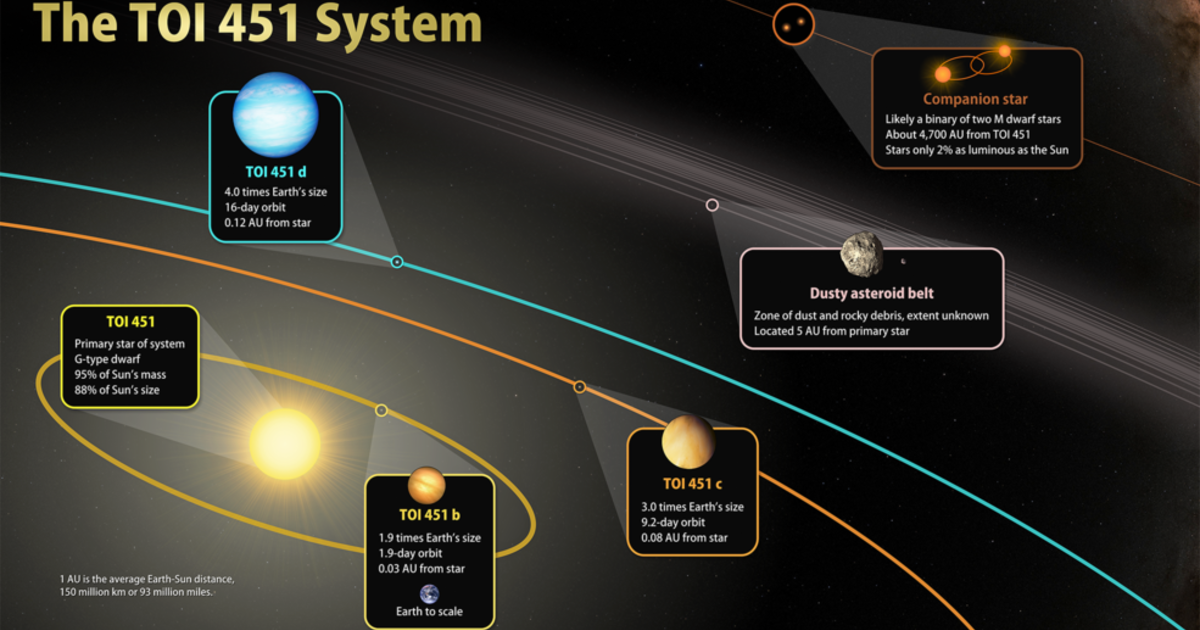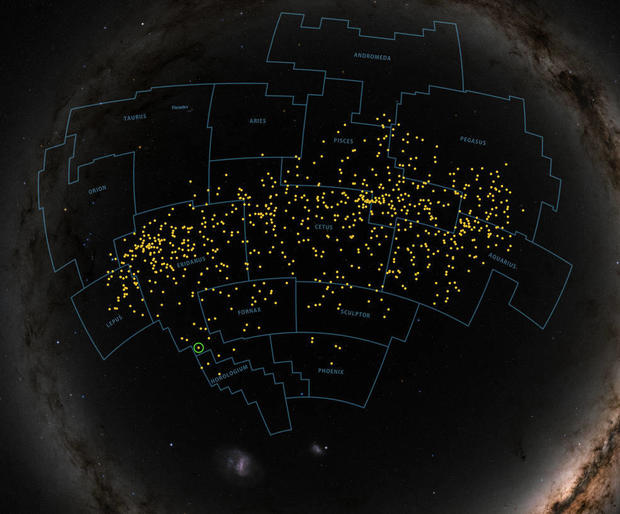
Floating in a stream of young stars, astronomers have seen a trio of neighboring Earth-like planets orbiting a much younger version of our own sun.
The team found the hot, young worlds using observations from NASA’s Transiting Exoplanet Survey Satellite (TESS), according to a new study published in The Astronomical Journal. The planets orbit a star called TOI 451.
The system is in a newly discovered Pisces-Eridanus stellar current, which is less than 3% old in our solar system, which extends over a third of the sky. These so-called star rivers form when the gravity of our galaxy, the Milky Way, tears off clusters of stars and dwarf galaxies, forming an elongated cluster that continues to disperse in a stream over time.
“This system checks many boxes for astronomers,” chief researcher Elisabeth Newton said in a statement Friday. “It’s only 120 million years old and only 400 light-years away, which allows detailed observations of this young planetary system. And because there are three planets between two and four times the size of Earth, they are especially promising targets. to test theories about how planetary atmospheres are evolving. “
NASA’s Goddard Space Flight Center
The Eridanus Fish, so named for the constellations with the largest number of stars, extend into 14 constellations in total, measuring about 1,300 light-years long.
Astronomers have determined that it is only 120 million years old, eight times younger than previous estimates. Its young age makes it especially exciting to study the formation and evolution of planets and stars.
The star of the system, TOI 451, also known as CD-38 1467, is located at constellation Eridanus, about 400 light-years away. It has 95% of the mass of our sun, but it is 12% smaller, slightly colder and emits 35% less energy.
The TOI 451 rotates every 5.1 days, five times faster than the sun.
“The sun on the newly discovered planets is like a teenager compared to our own sun. That means their planets are still changing and evolving,” Newton said.
NASA’s Goddard Space Flight Center
The three planets are very hot and inhospitable to life as we know it, orbiting its star three times closer than Mercury reaches our sun. Temperature estimates range from about 2,200 degrees Fahrenheit for the innermost planet to about 840 F for the outermost.
The nearest planet revolves around the star approximately every 2 days, while the farthest one revolves every 16 days. They are about the size of Earth and Neptune.
Although there are more than 4,000 known planets outside our solar system, most are older and much farther away from Earth than the newly discovered system. According to the research team, only seven other young systems with multiple planets in transit have been found.
The trio offers astronomers the rare opportunity to study a group of growing planets. Researchers plan to continue studying the planets using NASA’s Hubble Space Telescope and its planned successor, the James Webb Space Telescope, to examine how systems like our own solar system evolve.
“By studying these planets in the context of others, we can combine the image of how planets form and develop,” Newton said.

